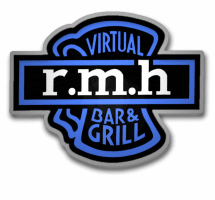rec.motorcycles.harley
General
Philosophical
Synthetic
Oil
Technical
Wrenching
Dyna Frame
Bad Vibes
Rake and Trail
TC88
Cam Specs
Carburetors
Extracting Broken Screws
Fuel Injection Intro
Heads -- Evo BT
Heads -- Shovel
Hop-up Suggestions -- BT
Hop-up Suggestions -- 883
Ignition
Lighting Mods
Neat Stuff
Oil Cooler Fans
Packin' (tools)
Painting & Finish Maintenance
Pipes
Replacement Seats
Roadside Electrical Troubleshooting
Shocks
Tire Specifics
Tranny Lube
Riding
Buying
Selling
History
Harley
.net Resources
Et
cetera
Design and content © 2004
Mild Bill (Asshole #27)
StephG (Asshole#108)
r.m.h VB&G logo design © Jim Combs

Suggested Carburetors
My wrench says he can make a stock Keihan CV carb perform as well as anything else. In this I do not doubt him, as he races a CV, but I do wonder what he would charge. Unless you are a carburetor wizard or are limited by a sanctioning body, dump the stock carb if you want to do anything more than wake up your motor.
There are several good carburetors on the market. Mikuni is recommended by many wrenches, but is made overseas (hssssss). They do sell a hell-of-a-nice calendar tho...
Two that are made in the US are S&S and Quicksilver. Because of its popularity, the S&S is well known by every Harley mechanic and has excellent parts availability.
The Quicksilver carburetor is much newer. Its advertised benefit is its simplicity. Jeffery Stubbins reports that the milage is greatly improved over stock, stock w/Dynajet and the S&S. This carburetor is California Air Resource Board (CARB) approved. Its reputation is growing rapidly. I installed a QS (4mmm I think) on my Dyna. Because I live in California I had to order the 48 state needle separately but once installed I loved it. If it's simple enough for me, it's simple enough for yoy.
"I ran the 38mm QuickSilver on a FTLCU with a Crane 316-2b and the Thunder header. It work flawlessly. Was able get 73 HP to the rear wheel[. T]he throttle response was great. Was a breeze to tune just put it on the dyno to choose the proper needle (could be done by reading the plugs but the dyno was more fun) then run it down the road a 2000 rpm and check the plugs to adjust the low end. There is only three adjustments total on the thing. The needle sets the mixture above 2500, the click adjustment sets the low speed mixture and you just set idle speed like any other carb.
I liked the carb so much that when my engine gets back with the 96" kit in it I'm putting a 40mm QS on it. Of course the fact it supports the cruise on my Ultra doesn't hurt either." -- Leonard Pennock
CV Carburetor Hop-up
The following was provided by Leonard Pennock as...
"...a very inexpensive hop up of the Stock Keihan CV Carb used on the late model big twins. The information for this was extracted from an article that appeared in the December 1994 issue of American Iron and an article that appeared in the premiere issue of Thunder Alley. These changes are only legal for offroad use (then again so are pipe, carb, and cam changes). Refer to the harley shop manual for your bike for disassembly instructions of the carb.There are three things that need to be done for the low dollar hop up of the CV carb. The first is to provide access to the idle mixture screw. This is done by using about a 1/16" drill bit to drill the plug that is covering the idle mixture screw on the bottom of the carb. After drilling the plug insert a sheet metal screw and pull out the plug. To adjust the idle mixture warm the bike up adjust the idle speed to 1000 rpm screw the idle mixture in until the motor starts to stumble and then back it out 1/2 turn. Then reset the idle speed back to 1000 rpm.
The next area that needs attention is the hole in the base of the slide. This is the vacuum port. Drill this hole out with a #30 drill bit (.128"). This will improve the responsiveness of the slide and will also richen the mid range slightly.
While the slide is out of the carb it is time to consider replacing the needle. Most of the CV carbs have a needle that is fat for about half the length which causes the CV to run lean in the mid range. The idle needle has an even taper and was used in the [19]88 49 state Sportster and is part number 27094-88.
The next and final area of the low cost hopup is the carb jetting. For a slow jet use a #45 part number 27170-89; however, occasionally for engines with real hot cams it may be necessary to go with a #48. For the main jet start with a #165 part number 27116-88 which should be correct for most bikes. Some times it might be necessary to run a #170 but this is the exception not the rule. Read the plugs and use the dyno to find out for sure.
This completes the low dollar hop up. The total cost of parts should be under $20 but since I didn't price them I'm not sure.
This will give the CV a much better response and is really all the money that should be spent on one in my opinion. If you want more performance go with a good carb like the Quicksilver, S&S, Mikuni or Rev Tech and put the CV on top of a stack of papers (it works good for holding the manual open)."